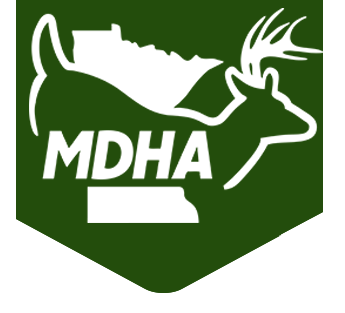
- Alex Comstock
- From Whitetales
- Hits: 3392
Spring Scouting: Pay Attention to these 3 things
- Alex Comstock
- From Whitetales
- Hits: 3392
If you aren’t or never have taken full advantage of spring scouting before green-up, you’re missing out on a lot of whitetail information that could be applied to following seasons. Many times, you’ll hear from successful deer hunters that the most important time of the year for a deer hunter is spring. The more hours you spend scouting, the better odds for success next fall. Here are three things you should pay attention to while you’re out scouting and/or shed hunting this spring.
1) Rut Sign
In my eyes, the best time of the year to identify rut sign is during late-winter or early-spring before the woods come to life and then green-up. For as much as the rut provides a level of uncertainty with buck movement, and seemingly randomness, there’s some form of pattern from year to year. Nothing is ever set in stone, but what we’re looking for are tendencies, which can be uncovered this time of year via rut sign. If you wait too long, scrapes won’t be visible anymore, and rubs won’t be as eye-popping as they are after winter’s end.
What makes this time of year so valuable is the fact you can scout for all of this rut sign without potentially harming your hunting efforts. During or just prior to the season, it could hurt you to go blasting into areas looking to scout and trying to figure out where bucks are moving through. One of the most overlooked things in my mind is locating heavily used scrapes. If you can find a scrape that has clearly been worked over a multitude of times, assuming major deer patterns don’t shift the following fall, you can bet these scrapes will likely be used next fall as well. The most important scrapes to locate in terms of hunting over or near are the ones back in the cover, not the ones on the field edges as these are often hit in the middle of the night.

When scouting, I’m looking for scrapes that are close to buck beds, or in an area you’d think a buck would visit during daylight hours. The same goes for rubs. I’m on the search for clusters of rubs back in cover near bedding areas. I want to find sign in places I believe mature bucks will be using during daylight hours. If you take time in the spring, and gather as much information as possible, it’s then up to you to put the puzzle pieces together. Taking notes and marking up maps is one good way to visualize and better understand a strategy as you move into fall.
2) Bedding Areas
Spring is the time of year to identify bedding areas on properties you hunt. If you can, identify the general bedding areas, but more specifically, find the buck beds and you could be putting yourself in great position come fall. When it comes to buck beds, things can get a bit tricky. I’m still learning myself, but there are certain things to be looking for. You want to be looking for areas of your property that a buck will feel safe and secure. Areas where he can see a distance one way and smell any approaching danger from the opposite direction. When searching for buck beds, they will usually be secluded and worn to the dirt because odds are, a buck will be bedding there throughout the year. Rubs in and around bucks’ beds will often be prevalent as well. If you want to learn more about buck bedding check out the video below. A couple other great places to learn more about hunting and finding buck beds are The Hunting Public’s YouTube Channel or The Hunting Beast Website.
Buck beds aren’t the only important bedding to locate though. Spring scouting is a great time to identify areas does like to bed as well. I’ve found doe-bedding areas to be a lot closer to food sources, and unlike buck beds where they are often secluded, when you find doe bedding areas, you’ll often notice a cluster of beds. Doe bedding areas are important because bucks know where these are. During the rut, bucks will cruise from doe bedding area to doe bedding area looking for does in estrus, and if you know where those are, you can set yourself up for success.
3) Entrance/Exit Strategies
One thing I’m always doing during this time of year is reviewing my entrance and exit routes, and trying to map them on any property that is new to me. Something that you could be doing is walking your entrance and exit routes and wind testing them. I’ll wait until a day when the wind is what I’d want it to be while hunting. I’ll then walk my entrance route while dropping milkweed fuzz to see what the wind is really doing. If you’re busting deer before you ever make it to the stand, that’s no good. By walking your access route and wind testing it, you can identify if you need to make any changes to how you get into or out of a stand. This is also a good time of year to clear any branches or obstacles that may have fallen during winter.
At the end of the day, your entrance and exit route can make or break a stand location. Take time in the off-season to understand how your hunting area lays out and perfect these. It may be a long winding route that takes over an hour to get to a stand, but it can be well worth it in the end.
Final Thoughts
If there’s anything you take from this article, I want you to recognize how important scouting is during the spring months. There is a plethora of information left by whitetails each year, and this is the time of the year to get out there and collect it, and then use it to your advantage to make the most of fall.






